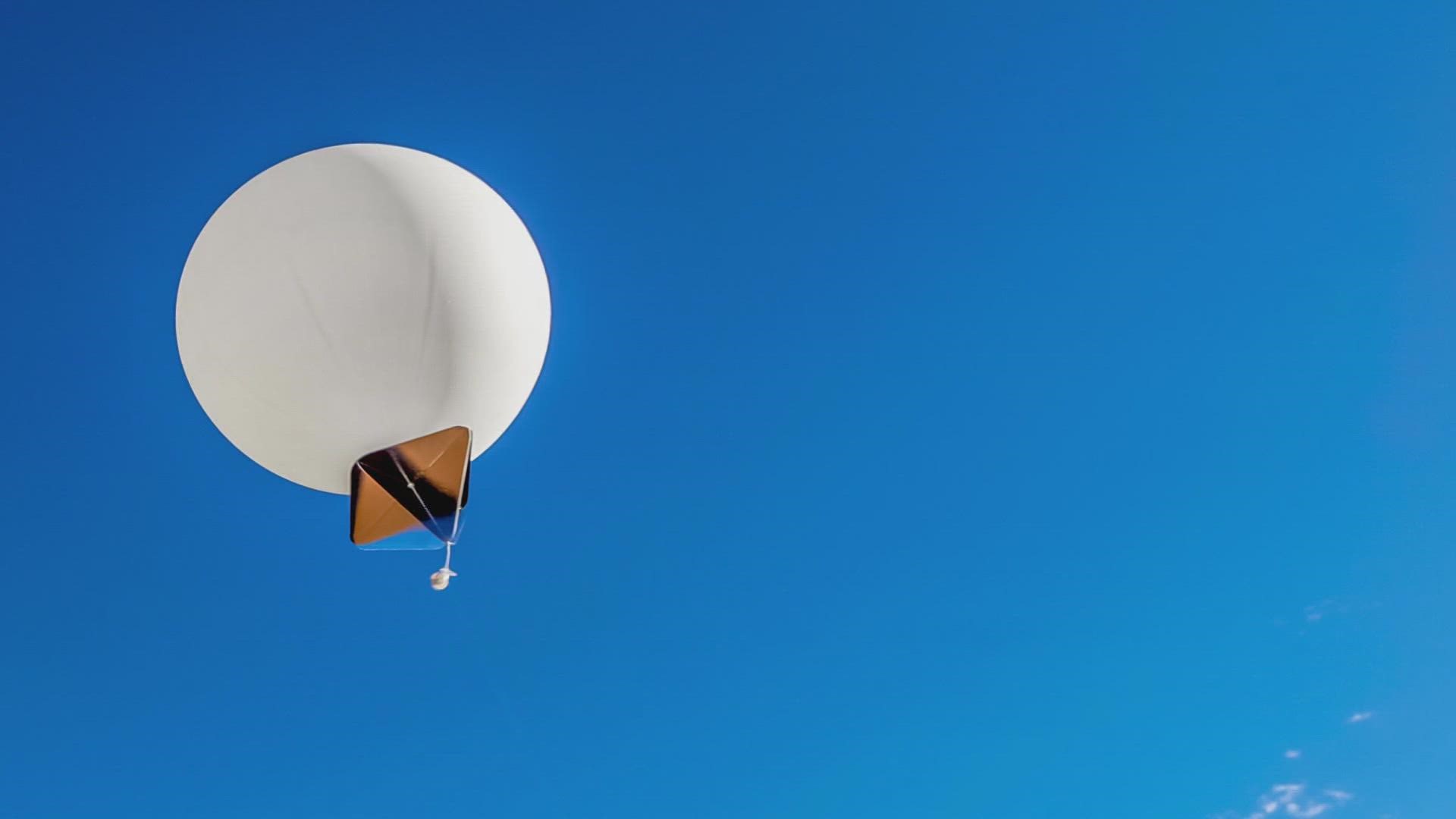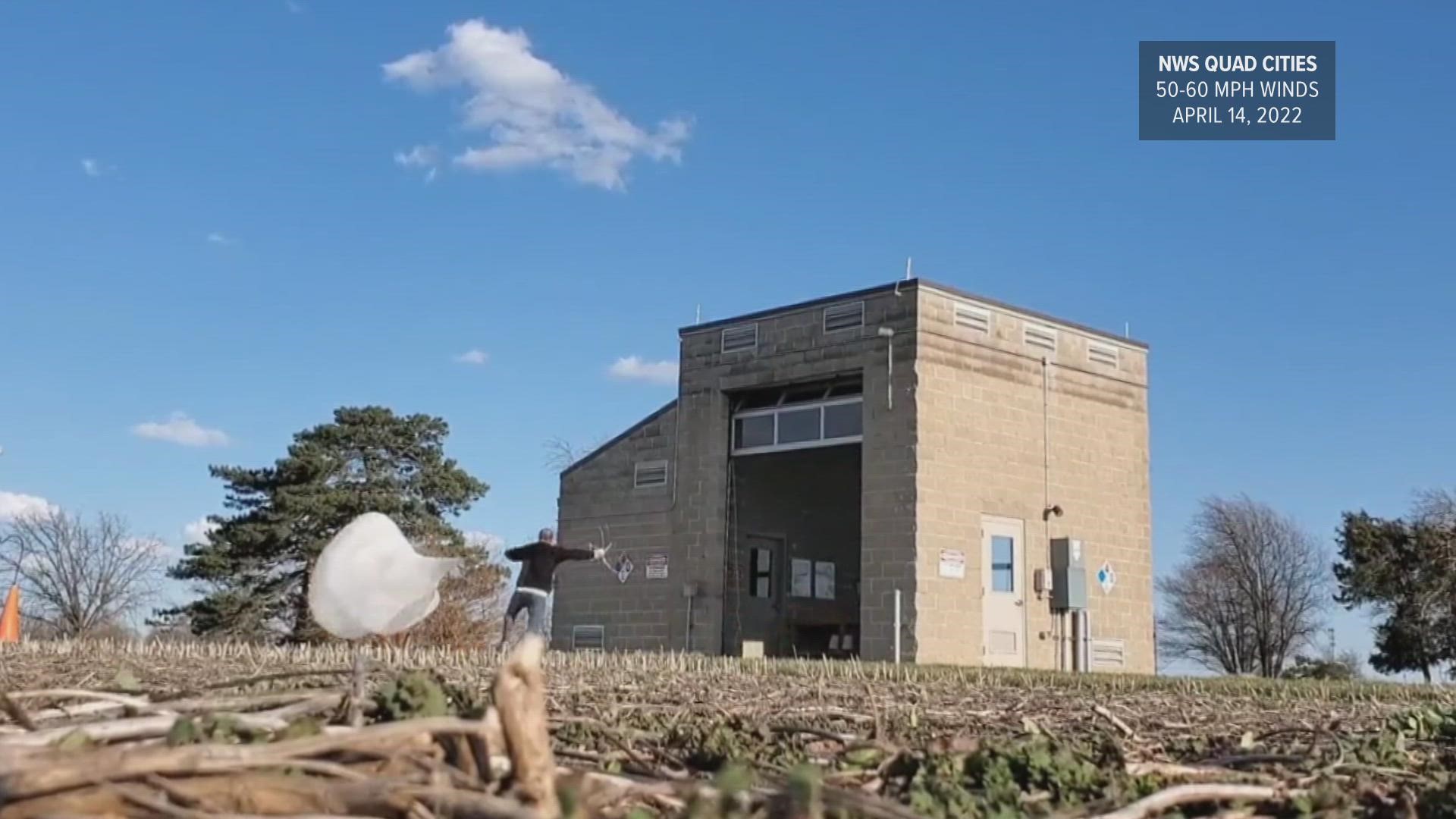BOULDER, Colo. — According to the National Weather Service (NWS), a supply chain issue has grounded the weather balloons in Denver.
Normally, two balloons a day would measure the atmosphere from the ground to the stratosphere. The data feeds directly into the computer models that meteorologists use to make weather forecasts.
“We’re at the point where we don’t have any helium on site," said Jennifer Stark, the meteorologist in charge of the NWS office in Boulder, which is responsible for 22 counties in northeast Colorado including Denver. "We’ve suspended the balloon launches at least until we can build our supply back up.”
There are a total of 101 NWS weather balloon sites in the country – Denver is one of only 12 places that still use helium. The last balloon launch in Denver was on July 9.
Most offices have switched to hydrogen because it's cheaper and easier to get. But there are a couple of factors that have slowed the transition to hydrogen in Denver.
Hydrogen is a more volatile element, so the launch site would have to move out of the Central Park neighborhood where the balloons are currently housed.
NWS Boulder is also one of the few offices that does not handle their balloon launches in-house. A contractor launches their balloons from a location close to the old Stapleton Airport, where the local NWS office was located until May 1999.
"It's a heavily populated area, there's a major highway and a light rail going right passed," said Stark. “We’re still fairly early in the process but we hope to have a location identified and move to hydrogen in the future.”
Stark said they still get measurements from ground weather stations, satellites and radars. Commercial airplanes also carry weather instruments.
Colorado also has a second location. The weather balloons in Grand Junction are still flying because they have made the switch to hydrogen.
Stark said weather balloon observations are an important piece of the puzzle, but it doesn't make or break a forecast.
“I would say that the meteorologists always want as much data as they can get their fingers on, and get their eyes on, to make the most accurate forecast that they can,” she said.
Stark said she doesn't know how long it will take to get enough helium for the next launch in Denver.
She also said the NWS has made a decision not to pursue higher-grade helium that is used in medical facilities because they don't want to take away from another critical industry that may also be feeling the impact of this nationwide shortage.
WATCH: Virtually nothing can stop the National Weather Service from their daily weather balloon launches.
MORE WAYS TO GET 9NEWS
Subscribe to our daily 9NEWSLETTER for top stories from 9NEWS curated daily just for you. Get content and information right now for can’t-miss stories, Next and Broncos content, weather and more delivered right to your inbox.
DOWNLOAD THE 9NEWS APP
iTunes: http://on9news.tv/itunes
Google Play: http://on9news.tv/1lWnC5n
HOW TO ADD THE 9NEWS APP TO YOUR STREAMING DEVICE
ROKU: add the channel from the ROKU store or by searching for KUSA.
For both Apple TV and Fire TV, search for "9NEWS" to find the free app to add to your account. Another option for Fire TV is to have the app delivered directly to your Fire TV through Amazon.
SUGGESTED VIDEOS: Latest from 9NEWS


